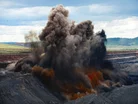The looming crisis in rare-earth metals

As the world pivots towards a greener future, the focus has largely been on reducing carbon emissions. However, a less-discussed but equally pressing issue is the looming shortage of rare-earth metals, crucial for green technologies. A recent article by Boston Consulting Group (BCG) warns that the global demand for rare earths is expected to reach 466 kilotons by 2035, up from 170 kilotons in 2022. Tom Butler, Senior Adviser at BCG, formerly CEO of the International Council on Mining and Metals (ICMM) and a key contributor to the article, emphasises the gravity of the situation: “The main point of the article is to highlight an expected critical shortage of rare earths in the near to medium term, which threatens our ability to achieve our decarbonisation objectives. The shortage is compounded by the fact that China dominates the existing supply chain as a result of which the market is subject to geopolitical risks. It seems increasingly clear that we will not be able to achieve the Paris Agreement’s target of limiting temperature increases to no more than 1.5 degrees above pre-industrial levels. We are running out of time on this.”
The Complexity and Geopolitics of Rare-Earth Mining
Rare-earth metals are not as rare as their name suggests: the challenge lies in their extraction and processing. “Their processing is extremely complex, requiring very skilled personnel,” Butler notes. “And the development lead time can be long – at least five years, depending on the location of the deposit, and considerations such as the nature of the ore body, logistics, and the fiscal, legal and permitting framework.” The BCG article suggests that more than 20 new rare-earth projects need to be launched immediately to avoid a shortage by 2030, with an additional ten projects needed by 2035. The article also highlights the need for a $30bn investment in the upstream stage alone from 2022 to 2035.
China currently dominates the rare-earth supply chain, posing significant geopolitical risks. Butler recalls the 2010 price spike when China restricted supply to Japanese manufacturers following a political dispute. “I think this is one of the key preoccupations of western countries,” he says. The article also highlights the role of market dynamics in the rare-earth industry. For instance, the price of neodymium oxide needs to be at least $150 per kilogram for a midstream project to be profitable. However, prices have never exceeded this threshold for any significant period.
Tom Butler advocates global collaboration. “Although governments were initially slow to take action on this, it is encouraging to see that there is now broad acknowledgement of the challenge. Over the last few years many countries have articulated critical minerals strategies. Some countries, like the USA, are directly supporting the private sector in this area with equity investments. And as the article highlights, the French have established an “observatory” to develop technical and economic solutions in the critical minerals sector. I do think there is a pressing need for still greater collaboration and also a global knowledge centre and “warehouse” for information exchange. We have an International Energy Agency but this does not yet exist for mining.”
The Human and Environmental Costs
While the focus is often on the economic and geopolitical aspects, it's crucial to also consider the human and environmental costs of rare-earth mining. It is essential that any new mining projects adhere to the highest standards of environmental protection and social responsibility. Companies should engage with local communities and invest in sustainable mining practices to mitigate the environmental impact. The industry has a responsibility to ensure that the extraction of these critical minerals does not come at the expense of local ecosystems or communities."
This added layer of complexity makes the call to action even more urgent. As we strive for a greener future, we must also ensure that the path we take is sustainable and just, not only for the global community but also for the local communities directly affected by these mining activities. It's a tall order, but one that we cannot afford to ignore.
A ticking time bomb
The rare-earth metals shortage is a ticking time bomb that requires immediate and collaborative action from both governments and the private sector. As Tom Butler puts it: “In my view a much higher level of priority needs to be allocated to this issue. At the most strategic level, a far greater degree of international cooperation is required, as we have highlighted in the article.” The BCG article's key takeaways underscore the urgency of the situation: the global 2050 carbon emissions targets may be eclipsed by a rare-earth supply-demand imbalance unless swift, aggressive, and purposeful action is taken. Upstream mining operations should be initiated immediately, and collaboration among public-private groups, regional and private partnerships, and industry consortia is crucial for risk-sharing and transparency.
The time to act is now. The rare-earth shortage may not be uppermost in people's minds, but it must be resolved—or it will become a bottleneck, significantly limiting the world's chances to meet its carbon emissions goals.
As Butler concludes, "The rare-earth shortage may not be uppermost in people’s minds now, but it must be resolved—or it will become a bottleneck, significantly limiting the world’s chances to meet its carbon emissions goals. By 2035, we expect to need roughly three times the current level of demand for rare earth magnets. As we have highlighted in the article, we will need roughly 30 new projects by 2035 in order to meet this demand. We are a long way from achieving this."
This article's analysis serves as a call for immediate action. The stakes are high, and the window for effective action is rapidly closing. It also serves as a blueprint for governments and industry stakeholders on how to navigate this complex issue. It's not just about securing a supply of rare-earth metals; it's about securing our future. With the clock ticking, the question is not whether we can afford to act, but whether we can afford not to.



